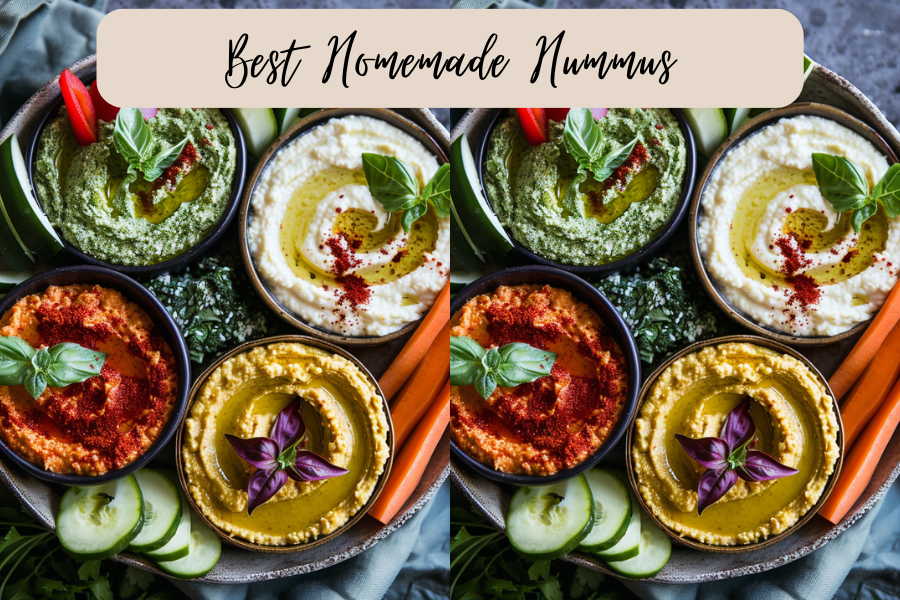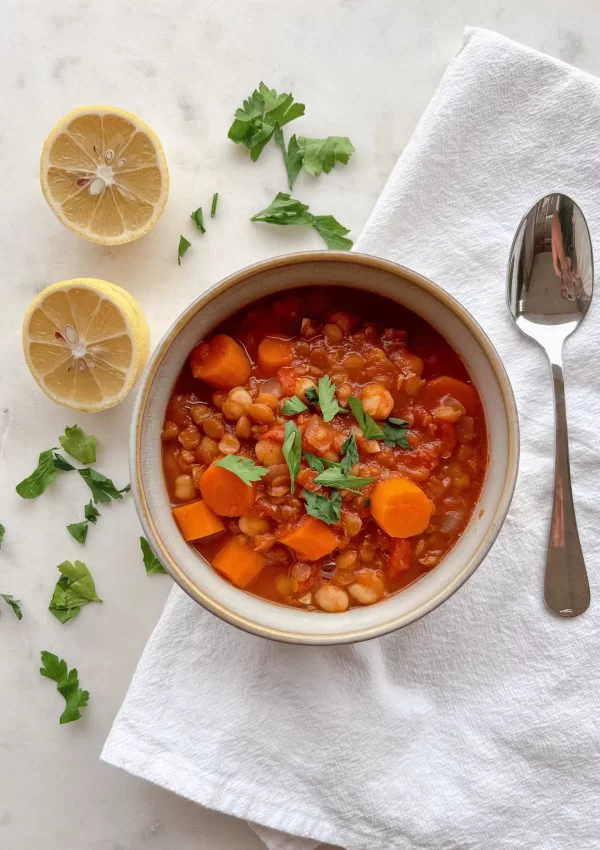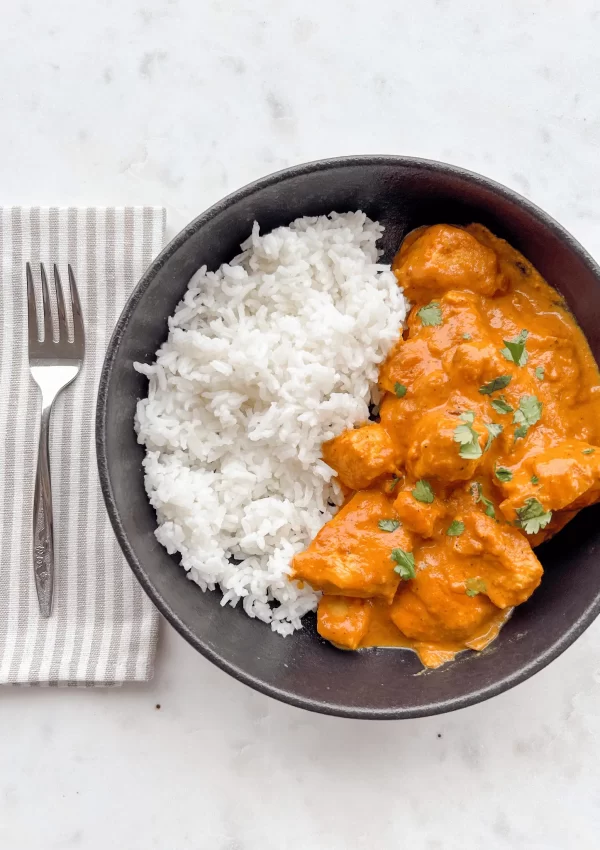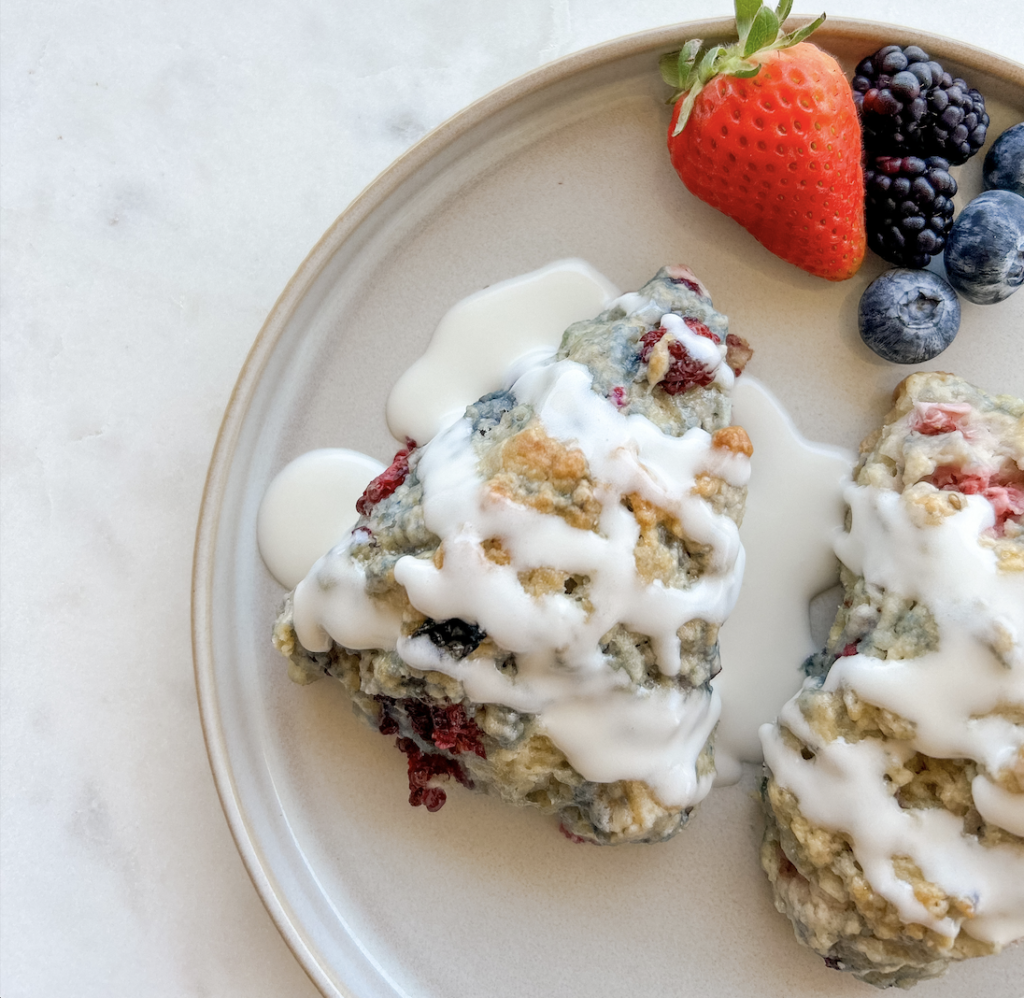Allow me to introduce you to the best homemade hummus recipe! We are going to dress up a classic hummus base in 3 ways. It requires no cooking (only a food processor), comes together in 5 minutes, and tastes better than store-bought!
This post contains affiliate links, which means I’ll receive a commission if you purchase through my link, at no extra cost to you. Please read the full disclosure here.
When the heat starts to pick up outside, I tend to gravitate toward cold-served food and no-cook options. I want fresh, bright, and light meals. Hummus is perfect for the summertime because it checks all of those boxes.
In this post, you will learn how to make a classic hummus and some different variations to consider. We will discuss tahini, serving options, and equipment needs. Plus, a nutrition overview!
In this recipe, I use my salt-free Greek spice blend from my spice company – The Spice Girl Kitchen. I’m completely biased because it is, after all, my spice recipe and the best salt-free Greek seasoning on the market. But feel free to use whatever Greek spice you have on hand!
This post is all about the Best Homemade Hummus.
What is Tahini?
Tahini is essentially just ground-up sesame seeds (just like peanut butter is ground-up peanuts)! It has a creamy texture and a nutty flavor. It’s a staple ingredient in many Mediterranean and Middle Eastern dishes.
Tahini Nutrition
Tahini is an incredibly nutrient-dense ingredient! Just two tablespoons packs:
- 7 grams of plant-based protein
- 2 grams of fiber
- 10% of the daily value of iron
- 12% of the daily value of calcium
Tahini Replacements
Sesame seed allergy? No problem! You have a few options to replace tahini:
- Peanut butter will add a similar creamy consistency. However, it will significantly impact the flavor of hummus.
- Plain Greek yogurt adds a creamy consistency and tangy flavor. Plus, it adds a bit of extra protein!
- Sunflower seed butter doesn’t have as strong of a flavor as peanut butter, keeps the hummus creamy, and keeps this recipe vegan!
[the_ad id=”3378″]
Serving Options
How can hummus be used?
The best part about hummus is that it can be a dip served as an appetizer or side dish OR a spread for your Mediterranean-inspired wraps, sandwiches, or flatbreads. I have even thinned out hummus using extra oil, water, or lemon juice making it drizzle-able (like a dressing). I will drizzle this “hummus dressing” over a rice bowl or salad! It’s so versatile!
What can I serve with hummus?
If you are serving hummus as an appetizer or side dish, it is traditionally served with pita bread. Oftentimes, it is also served with a spread of crunchy veggies like carrot sticks, cucumber, celery, sliced bell peppers, baby bell peppers, or really any raw veggie you enjoy! Plus, crackers are always welcome with a bowl of hummus.
What do I need to serve my hummus?
Typically, a large serving platter, various bowls, and (if you are feeling extra fancy) some small spoons so people can scoop the hummus on their plates. Odds are, you already have these things on hand!
[the_ad id=”3378″]
Equipment Needs
This recipe doesn’t require any cooking! Here is a full list of equipment that I used to make this recipe:
- knife – to slice lemons and chop garlic
- cutting board – to slice lemons and chop garlic
- juicer – to juice the lemons
- liquid measuring cups – for measuring tahini and lemon juice
- measuring spoons and cups – for measuring pesto, seasonings, and olive oil
- food processor – to make hummus (*you could also use a blender. But you just might need to scrape down the sides more)
- rubber spatula – to scrap all that delicious hummus out
Nutrition Overview
Hummus is vegan-friendly and naturally gluten-free – making this a great option for a crowd with various dietary restrictions! One cup of chickpeas contains about 14.5 grams of plant-based protein and 12.5 grams of fiber! That means that hummus is both a flavorful and nutrient-dense dip! Not to mention, serving hummus with raw veggies significantly increases the nutritional value of this dish. I don’t know about you, but I am so much more excited to eat raw veggies when there’s some hummus in the center!
[the_ad id=”3378″]
Hummus Trio
In today’s recipe, we are going to take the classic base of hummus and create a hummus trio.
Classic Garlic
For the classic garlic, I used 3 cloves of fresh garlic and garlic olive oil from my favorite local olive oil place, Queen City & Co. Of course, I had to throw in my Greek seasoning which I describe as my “garlicky, herby blend”. I placed 1/3 of this hummus recipe in a bowl and topped it with more garlic olive oil and more Greek seasoning!
Pesto
I put another 1/3 of the classic garlic into a second bowl and topped it with pesto. It looks pretty as a presentation and as your guests dip in, the pesto mixes with the hummus. Voila! Pesto hummus. I get my pesto from Aldi, but you better believe we will be making some homemade pesto soon!
Roasted Red Bell Pepper
The last 1/3 of the hummus remained in the food processor. I added about 3 tablespoons of jarred roasted red peppers from Aldi, processed the mixture until smooth, and added more red peppers to the top as a garnish. Easy peasy!
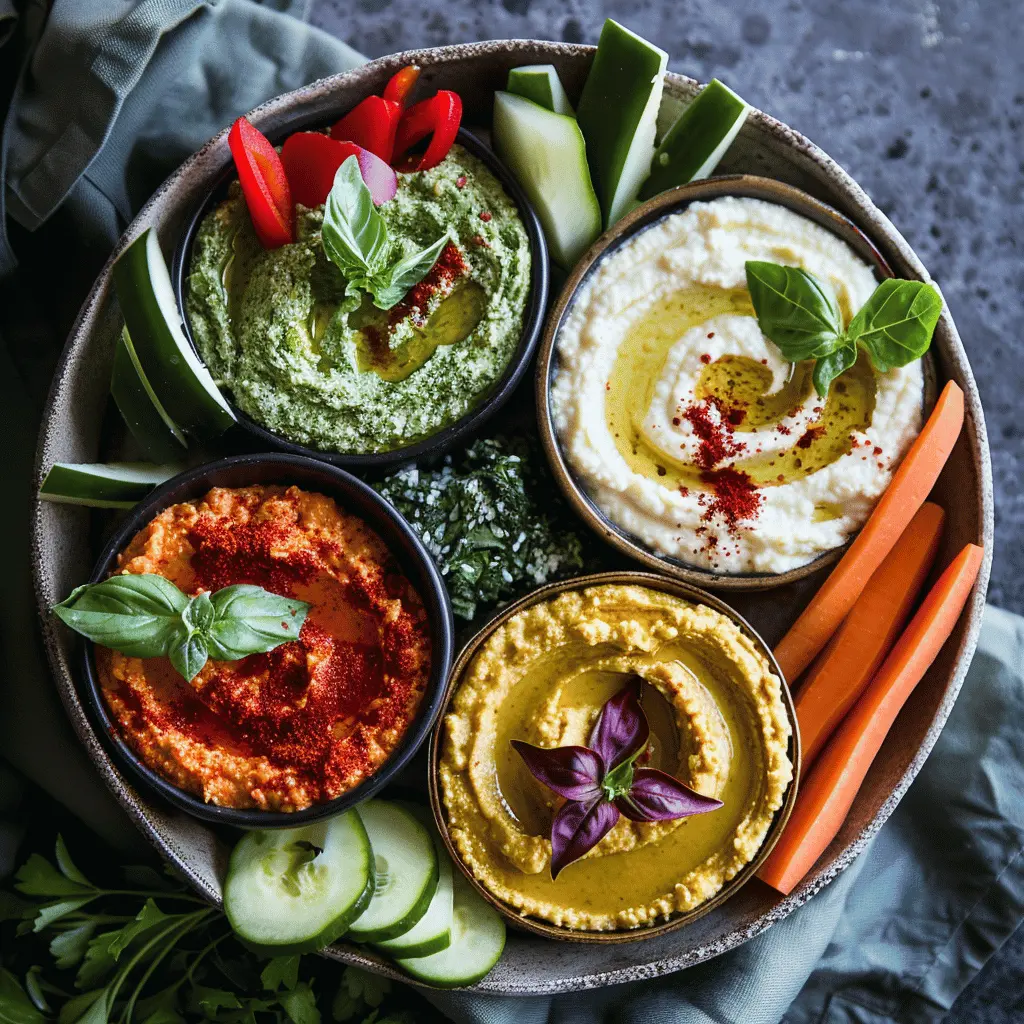
Best Homemade Hummus
Ingredients
Method
- Add all ingredients listed under "garlic hummus" to a food processor. Blend until smooth, scraping down the sides if necessary.
- Place 1/3 of the hummus mixture into a bowl and top with additional garlic olive oil and Greek seasoning.
- In a second bowl, place another 1/3 of the garlic hummus mixture (leaving the remaining 1/3 in the food processor). Top with pesto.
- Add the roasted red pepper to the food processor with the remaining 1/3 of the hummus mixture and blend until smooth. Scrape it into a third bowl and garnish with a few roasted red peppers.
- Serve with pita bread, crackers, and raw veggies of choice! Enjoy!
Video
Notes
Serving Options
How can hummus be used?
The best part about hummus is that it can be a dip served as an appetizer or side dish OR a spread for your Mediterranean-inspired wraps, sandwiches, or flatbreads. I have even thinned out hummus using extra oil, water, or lemon juice making it drizzle-able like a dressing over a bowl or salad! It's so versatile!What can I serve with hummus?
If you are serving hummus as an appetizer or side dish, it is traditionally served with pita bread. Oftentimes, it is also served with a spread of crunchy veggies like carrot sticks, cucumber, celery, sliced bell peppers, baby bell peppers, or really any raw veggie you enjoy! Plus, crackers are always welcome with a bowl of hummus.What do I need to serve my hummus?
Typically, a large serving platter, various bowls, and (if you are feeling extra fancy) some small spoons so people can scoop the hummus on their plates. Odds are, you already have these things on hand!This post was all about the Best Homemade Hummus.
Did you make this recipe? Make sure to tag me @thespicegirlkitchen_ on Instagram or @thespicegirlkitchen on TikTok! I love seeing your recreations! I will be your ultimate hype woman!
Want to learn more about Kelsey? Click here to read her story!

